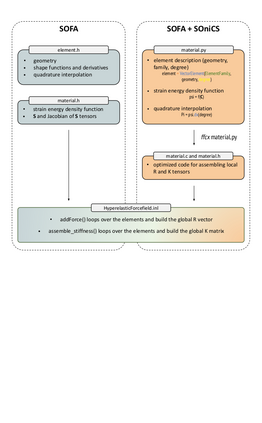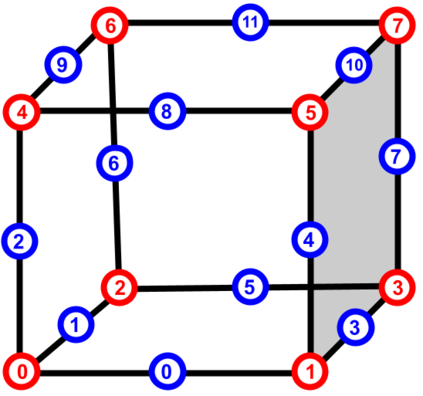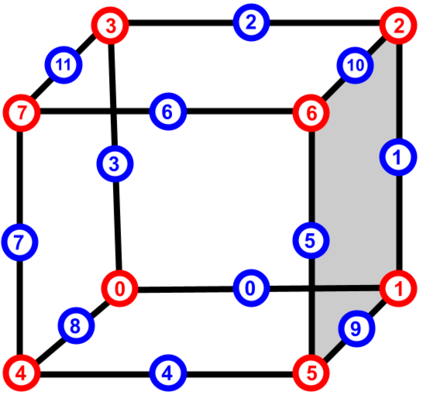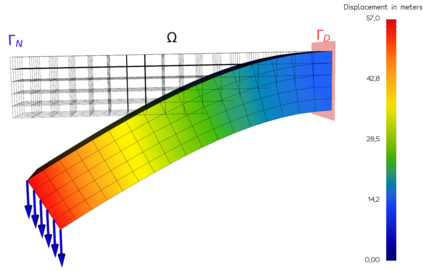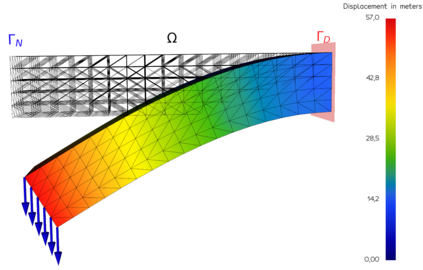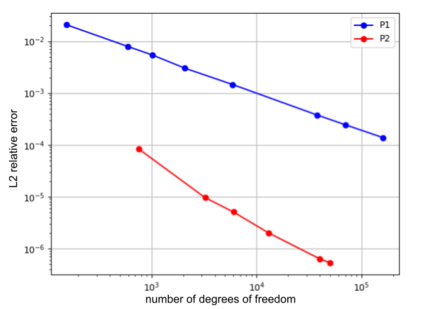This new approach allows the user to experiment with model choices easily and quickly without requiring in-depth expertise, as constitutive models can be modified by one line of code only. This ease in building new models makes SOniCS ideal to develop surrogate, reduced order models and to train machine learning algorithms for uncertainty quantification or to enable patient-specific simulations. SOniCS is thus not only a tool that facilitates the development of surgical training simulations but also, and perhaps more importantly, paves the way to increase the intuition of users or otherwise non-intuitive behaviors of (bio)mechanical systems. The plugin uses new developments of the FEniCSx project enabling automatic generation with FFCx of finite element tensors such as the local residual vector and Jacobian matrix. We validate our approach with numerical simulations such as manufactured solutions, cantilever beams, and benchmarks provided by FEBio. We reach machine precision accuracy and demonstrate the use of the plugin for a real-time haptic simulation involving a surgical tool controlled by the user in contact with a hyperelastic liver. We include complete examples showing the use of our plugin for simulations involving Saint Venant-Kirchhoff, Neo-Hookean, Mooney-Rivlin, and Holzapfel Ogden anisotropic models as supplementary material.
翻译:这种新办法使用户能够轻松和快速地试验模型选择,而不需要深入的专门知识,因为组成模型只能用一行代码来修改。这样容易地建立新模型,使SONICS理想地开发代孕、减少订单模型,并培训机器学习算法,以量化不确定性或使病人能够进行特定模拟。因此,SONICS不仅是一个便利进行外科培训模拟的工具,而且也许更重要的是,为增加用户的直觉或其他非直觉性行为(生物)机械系统(生物)系统铺平铺路。插件使用FENICSx项目的新发展,使FFFCx的有限元素变压器自动生成成为理想,例如本地残余矢量和雅各布矩阵。我们用数字模拟方法验证我们的方法,例如制造的解决方案、罐头目和FEBEBio提供的基准。我们达到了机器精确度,并展示了插件用于实时的随机模拟,包括用户在与超弹性肝脏接触时控制的手术工具。我们用完整的例子展示了我们用于模拟SAR-HOL-KKKK-KI的模拟、SON-KI-KI-KIT-PROstro材料的插件。

